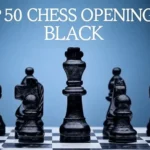Stockfish is one of the strongest chess engines ever created. It’s open-source, completely free, and used by millions of players, from beginners analyzing their games to grandmasters preparing for world championships. But how does it actually work? Let’s break it down.
1. The Basics
At its core, Stockfish is a computer program that calculates chess positions. It doesn’t think like a human—it doesn’t understand beauty, strategy, or emotion. Instead, it runs millions of calculations per second to find the best possible move based on logic and probability.
When you play a move, Stockfish looks at every possible legal reply your opponent could make. Then, it looks at your possible responses, and so on, building a giant “tree” of moves.
This process is called searching the move tree.
2. The Search Algorithm
Stockfish uses a method known as Minimax with Alpha-Beta Pruning.
- Minimax assumes both sides play perfectly. It tries to maximize its own advantage while minimizing the opponent’s.
- Alpha-Beta Pruning helps it skip bad lines. If the engine finds a move that’s already worse than another known option, it stops calculating that line.
This saves massive amounts of time, allowing Stockfish to search deeper—sometimes 30 or even 40 moves ahead in complex positions.
3. Evaluation Function
After searching many lines, Stockfish needs a way to judge which positions are better. That’s where the evaluation function comes in.
It assigns a score to a position based on different factors, such as:
- Material: how many pieces each side has.
- King safety: how safe the king is from attack.
- Piece activity: how active and well-placed the pieces are.
- Pawn structure: doubled pawns, isolated pawns, and passed pawns all matter.
- Center control: who controls the most important squares.
A score of +1.00 means White is about one pawn ahead. A score of –1.00 means Black is about one pawn ahead.
4. The Role of Neural Networks (NNUE)
In 2020, Stockfish became even stronger with the introduction of NNUE, which stands for Efficiently Updatable Neural Network.
This is a lightweight form of artificial intelligence that helps the engine evaluate positions more like a human would.
Instead of relying purely on fixed rules (like “knights in the center are good”), NNUE learns from millions of real games and engine evaluations. It recognizes patterns—like the power of two bishops working together or the danger of a weak king—more efficiently.
The combination of brute-force search and neural network evaluation makes Stockfish incredibly powerful.
5. Hardware Power
Stockfish itself doesn’t include graphics or fancy animations. It’s just code. But when you run it on a powerful CPU, it shines.
- On a standard computer, it can analyze around 20 to 40 million positions per second.
- On a supercomputer or server farm, it can reach hundreds of millions.
That’s why online platforms like Chess.com or Lichess use Stockfish in their analysis tools—they can deliver deep, accurate evaluations instantly.
6. Open Source Advantage
Unlike commercial engines such as Komodo or Houdini, Stockfish is open source.
That means anyone can:
- Download it for free.
- Study how it works.
- Modify it or create their own versions (for example, Stockfish 16, BrainFish, or SugaR AI).
This open development model lets hundreds of programmers worldwide keep improving it—constantly testing, fine-tuning, and releasing updates.
7. Why It’s So Respected
Stockfish consistently ranks at the top of computer chess rating lists. In tests between engines, it often scores over 3500 Elo—far beyond human capability.
It has:
- Helped players analyze mistakes.
- Advanced chess opening theory.
- Even contributed to AI research in other fields.
8. In Summary
Stockfish works by combining:
- Massive search power (billions of move calculations).
- Smart pruning (to ignore bad lines).
- Accurate evaluation (with both logic and neural networks).
- Community updates (open-source improvements).
It doesn’t play chess like a human—it plays like a machine designed to find truth in every position.
FAQ
Q: Is Stockfish free to use?
Yes. It’s completely free and open-source. You can download it from the official site or use it on major chess platforms.
Q: Can Stockfish be beaten by humans?
Practically never. Even the world’s best grandmasters can’t win against the latest version in fair conditions.
Q: What’s the latest version?
The engine is updated frequently—usually every few months—with new improvements to its NNUE and search functions.
Q: Does Stockfish learn from my games?
No. Stockfish doesn’t “learn” while you play. It relies on pre-trained evaluation networks and logic-based search, not continuous learning like ChatGPT or AlphaZero.

I’m a passionate board game enthusiast and a skilled player in chess, xiangqi and Go. Words for Attacking Chess since 2023. Ping me at Lichess for a game or chat.






